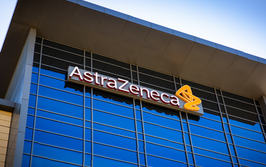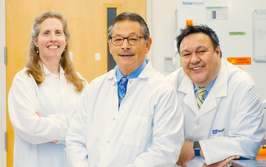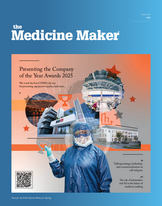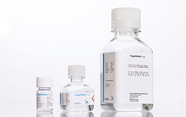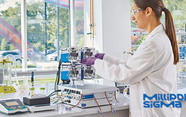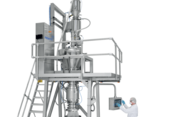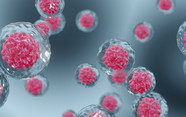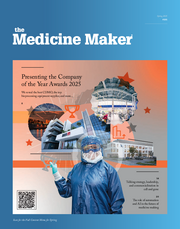ADC Innovation: The Road Ahead
ADCs have shown their promise, but the next step is realizing their potential.

Antibody-drug conjugates (ADCs) have long since promised to become the smart weapon of oncology by combining the specificity of antibodies with the potency of small molecule drugs. After decades of slow and steady progress, is the field finally hitting the accelerator? New advances in drug-to-antibody ratio (DAR), multispecific targeting, and nontraditional payloads could rewrite the ADC playbook, while simultaneously surfacing new scientific, manufacturing, and commercial challenges.
A report from Hanson Wade Intelligence, developed in partnership with Cytiva, says the ADC field is entering a pivotal next phase that pushes beyond the traditional bounds of conjugation chemistry and tumor targeting. Success, however, will depend on whether the industry can scale innovation without compromising manufacturability, regulatory clarity, or economic viability.
Higher payloads, higher stakes
According to the report, for years, most ADCs adhered to a conservative DAR range of two to four, striking a cautious balance between potency and tolerability. Now, the share of ADCs with DARs of greater than five has more than tripled since 2020, jumping from 13 percent to 46 percent. The trend was catalyzed by the clinical success of high-DAR drugs such as Enhertu (DAR 8) and Trodelvy (DAR 7.6), which demonstrated that high-payload conjugates can achieve superior efficacy without unacceptable toxicity.
New conjugation strategies, such as engineered cysteines, non-canonical amino acids, and glycoengineering, have made higher DARs more technically feasible. Technologies are available that will enable stable DARs of more than eight, while preserving product homogeneity and therapeutic function. The report claims that some biopharma companies are pushing DARs as high as 16.
Although the bar is rising, it’s not without risk. Higher DARs often increase hydrophobicity, which can lead to aggregation, faster clearance, and greater off-target toxicity. On the manufacturing side, they require more complex purification and formulation steps. Companies must also navigate a strategic tradeoff between developing in-house conjugation platforms or licensing existing, validated technologies, balancing speed against long-term IP control.
Still, the report sees a bright future: “The evolution of ADCs is redefining the ‘optimal’ DAR by balancing potency, stability, and safety.”
Of course, the trick will be marrying cutting-edge conjugation with scalable manufacturing and regulatory flexibility.
Multispecific ADCs
If one target isn’t enough, why not two – or more? That’s the thinking behind multispecific ADCs: the next goal in tackling tumor heterogeneity and treatment resistance.
Inspired by the success of bispecific antibodies, these ADCs are designed to bind multiple tumor-associated antigens or epitopes simultaneously. This multi-pronged approach can improve internalization and delivery efficiency, and potentially modulate the tumor microenvironment. By promoting immunogenic cell death and enhancing antigen presentation, multispecific ADCs could potentially convert “cold” tumors into “hot” inflamed ones that are more responsive to immune attack.
One early example is Alphamab Oncology’s JSKN003, a HER2-targeting biparatopic ADC that binds two different HER2 domains. Preclinical data suggests faster and more complete internalization than even Enhertu. Meanwhile, Ziihera, a bispecific antibody targeting the same HER2 domains, has validated the approach in a clinical setting.
Interest in multispecific ADCs is growing rapidly. According to the report, over 150 assets are now in development, with nearly 90 entering pipelines in 2024 alone – a 65 percent compound annual growth rate from 2020.
But that growth comes with caveats. These complex molecules demand sophisticated antibody scaffolds, linker chemistries, and conjugation processes. Manufacturing workflows often need to be redesigned. Regulatory approval paths remain murky, especially given the need for companion diagnostics to identify patients expressing all relevant targets. “Their complexity must deliver clear benefits,” the report notes.
Whether multispecific ADCs will outperform their single-target predecessors, or complicate the development landscape, remains to be seen.
Beyond cytotoxicity
Traditional ADC payloads have typically fallen into two camps: microtubule inhibitors and DNA-damaging agents. But with resistance and narrow therapeutic windows limiting long-term efficacy, the field is expanding toward new, more targeted payload types.
Emerging classes include:
- Immunomodulatory agents such as TLR and STING agonists, designed to activate the immune system.
- Antibody-oligonucleotide conjugates, which deliver siRNAs or antisense oligos to modulate gene expression.
- Degrader-antibody conjugates, which incorporate PROTACs or molecular glues to trigger targeted protein degradation.
These new payloads could transform ADCs into expanded drug conjugates and take them beyond oncology into diseases such as muscular dystrophy and inflammatory disorders. Avidity Biosciences’ AOC program in myotonic dystrophy, now in phase III, offers early proof of this broader potential.
But it’s not an easy road. Many of these next-gen ADCs have faced early setbacks. Immunomodulatory ADCs, in particular, have a 36 percent discontinuation rate in development, according to the report. Challenges include payload instability, poor intracellular delivery, off-target effects, and untested regulatory paths – especially in non-oncology applications.
Manufacturing is also an obstacle, as novel payloads often require specialized synthesis and conjugation workflows, which few companies and CDMOs are equipped to support.
Can innovation scale?
Taken together, high-DAR strategies, multispecific designs, and novel payloads are pushing ADCs into uncharted territory. But the industry faces a critical inflection point. Innovation is no longer the limiting factor – scalability is.
The field must grapple with rising CMC complexity, supply chain challenges, and uncertain regulatory pathways. The true test isn’t whether ADCs can be made more potent or precise, but whether these innovations can be transformed into commercial products that are manufacturable, safe, and economically viable.
Now that it has been proven that ADCs work, the next challenge will be proving they can evolve without collapsing under their own complexity.
With late-stage data emerging and the first wave of next-gen ADCs approaching approval, the oncology world is watching closely. The ceiling for ADCs may be rising, but only if the foundation is strong enough to support it.
Following a Bachelor’s degree in English Literature and a Master’s in Creative Writing, I entered the world of publishing as a proofreader, working my way up to editor. The career so far has taken me to some amazing places, and I’m excited to see where I can go with Texere and The Medicine Maker.



